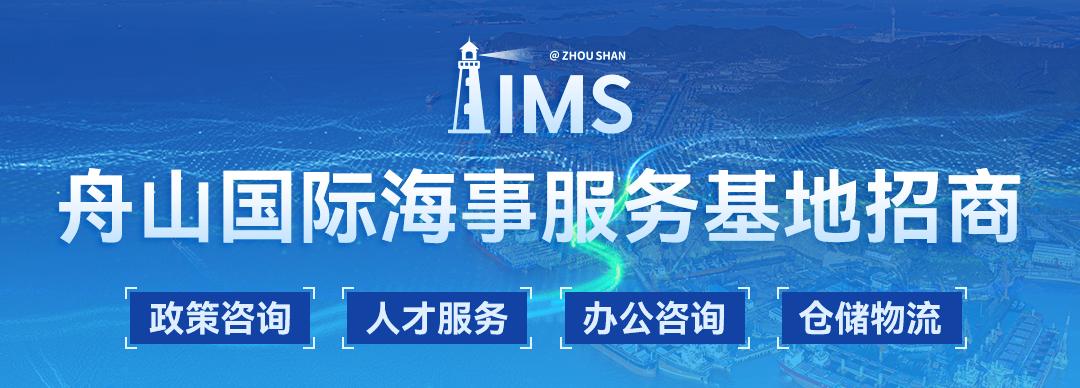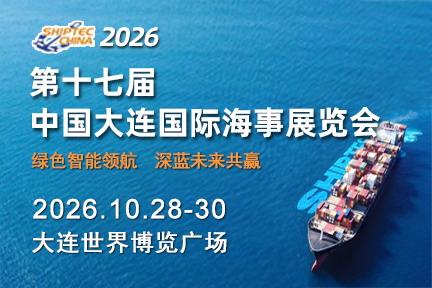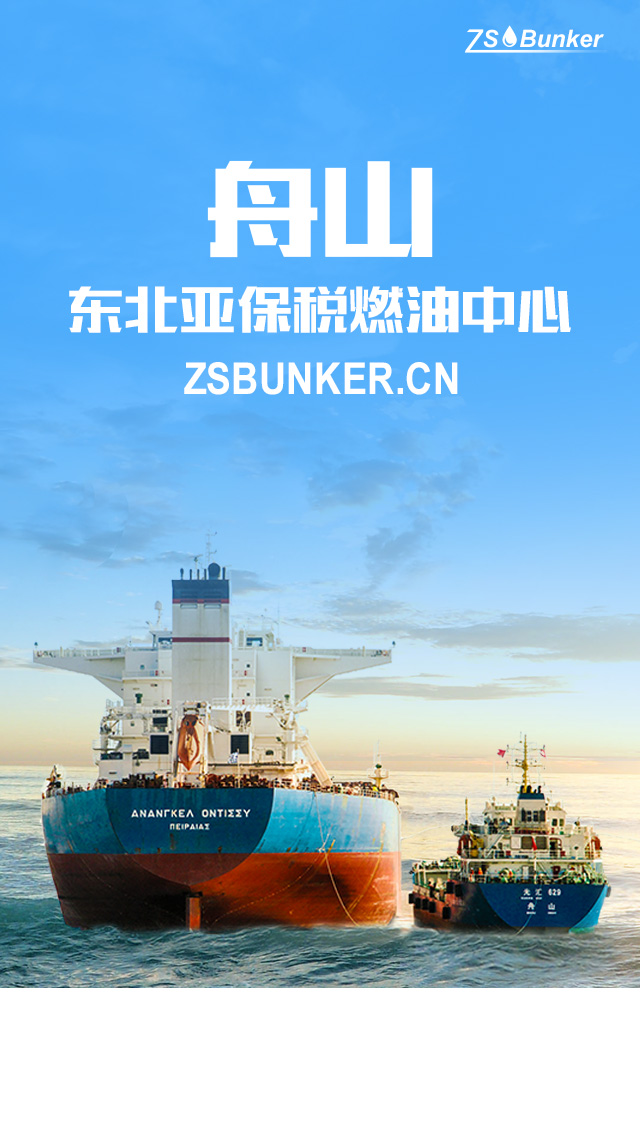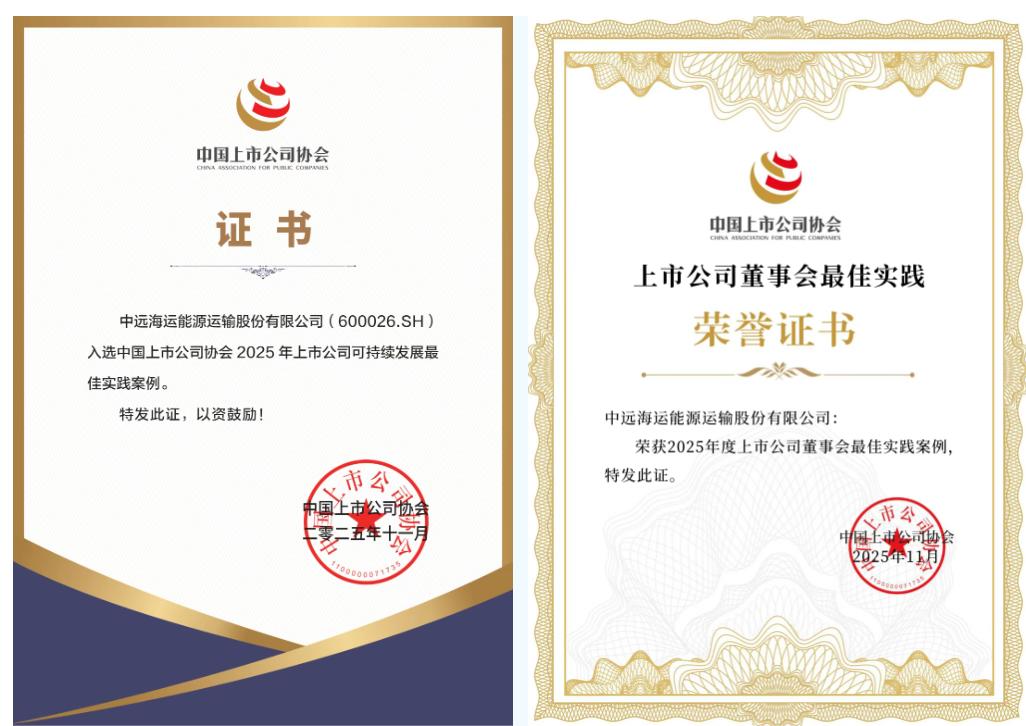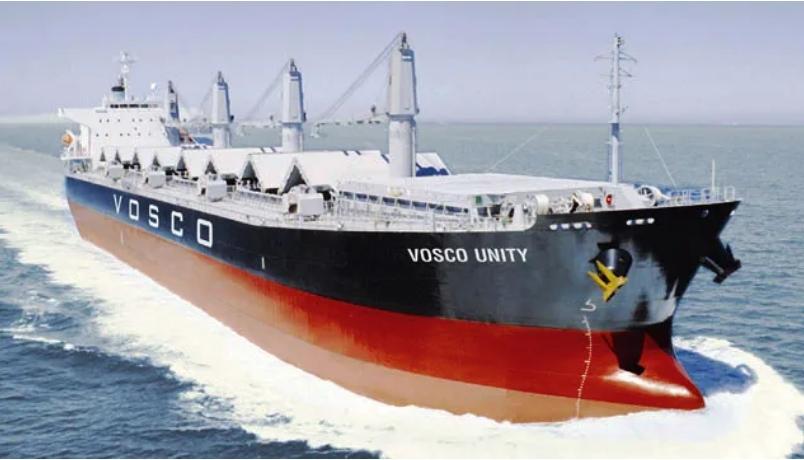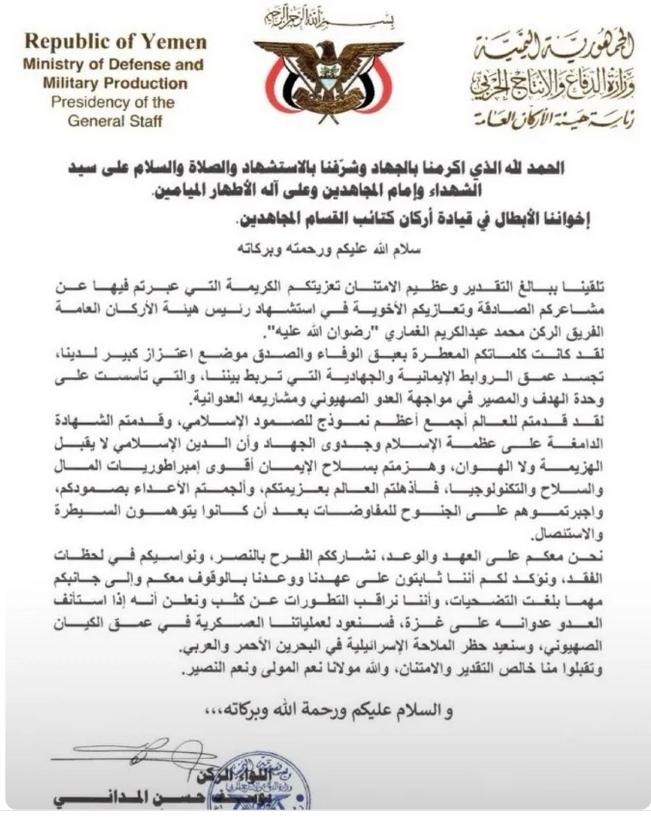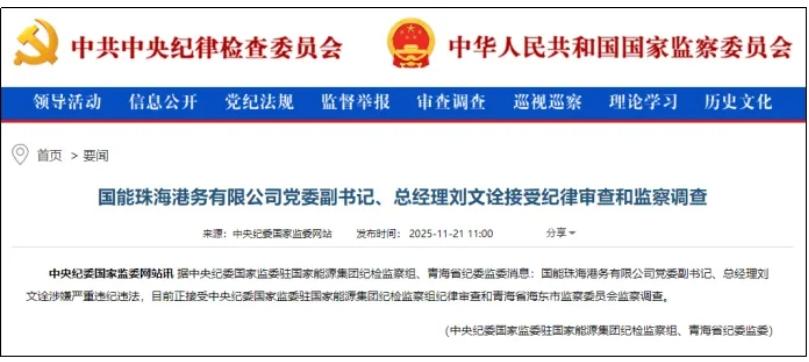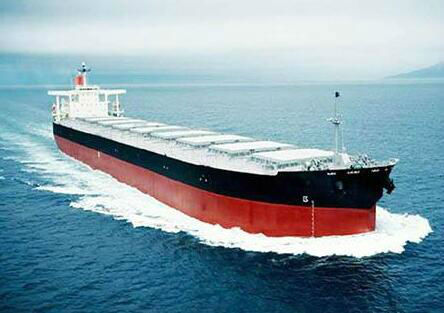
两天的广州之行,收获很多,见到了很多传说中的人物,倍感亲切。回港车上看到文章介绍最新的关于气导的仲裁案子,回到家也忍不住一口气写下和大家一起分享。关于气导方面,笔者曾经写过好多篇,包括去年年底关于气导航速索赔的London Arbitration(2018)1013 LMLN 1案。前些天伦敦仲裁庭又对航速索赔中所涉及的有效波高(通常也说是合成高度)及道格拉斯海浪3级等所谓的“好天气”定义作出了裁定,接下来就来看看该仲裁案- London Arbitration 6/19 (2019)1024 LMLN 2案。
在该案中,涉及一航次期租船舶,从南非到国内的航次,争议出现承租人所委托的气导公司AWT显示有航速索赔,而出租人不认。
speed and consumptions in good weather conditions as follows:
good weather conditions are understood to mean wind speeds of maximumbeaufort force 4 (11-16 knots) and total-combined (sea and swell)significant wave height confined to limits ofdouglas sea state 3 (0.5-1.25meters) with no adverse currents and no influence of swell.
Ballast ... about 12.50 knots on abt 46 mt ifo rmg380 plus abt 0.2 mt mdodmb.
承租人依赖AWT的气导报告,该报告指出该船在良好天气下的速度为9.88节;相比之下,根据Clean recap中第二条的规定,船舶在良好天气条件下空载的航速需要达到约12.5节。AWT发现,流对船舶速度的平均影响是正的,在航行期间为船舶的进展提供了0.04节的提升(即所谓的有利的影响)。在计算所谓的船舶航速油耗时,AWT将其应用于船舶的良好天气速度计算;从而计算出该船在航程中共损失了137.41小时,相当于49,045.38美元,按每日租金8,900美元减去承租人佣金。此外,AWT计算得出船舶超耗231.452吨重油以每吨340美元,超耗1.083吨轻油以每吨600美元(合同中规定的交还船油价),因此声称燃烧超耗的燃油总值为79,343.48美元。
根据AWT的报告,承租人声称出租人租船违反租船合同速度和性能保证,找出租人索赔128,388.86美元。
出租人否认他们违反了保证条款。出租人主张,没有天气能够满足租船合同中的“好天气”条件,因此任何声称船舶表现不佳的指控都必将失败。出租人找承租人反索赔,要求支付7,911.85美元的余额。
争议被提交仲裁,主要问题涉及“好天气”条件的含义,如下所述:
“total-combined (sea and swell) significant wave heightconfined to limits of douglas sea state 3 (0 .5–1.25 m) with no adversecurrents and no influence of swell.”
当事人双方争议的主要焦点是是难以协调对“有效波高”(也说合成高度)和“道格拉斯海浪3级”的界定。承租人主张“有效波高”是所遇到的波浪中最高三分之一的度量,并表示为以米为单位的平均高度,而不是高度范围。另一方面,道格拉斯海浪提到了与尺度上每个数字相对应的一系列波高。道格拉斯海浪3级对应的波浪群在0.5到1.25米之间。租船人依赖于AWT在2011年撰写的一篇文章。这篇文章提到了LMLN 826(伦敦仲裁4/11,(2011)826 LMLN 2)中报道的伦敦仲裁裁决,其中仲裁庭似乎提到最高2米的合成高度在道格拉斯海浪3级的良好天气定义范围内。在本案的情况下,AWT认为道格拉斯海浪3级的合成高度为2米是公平合理的。
因此,根据AWT文章和AWT的报告,承租人提出,Clean recap中的波高范围对应于2米的“有效波高”,并且“有效”波高的参考要么是印刷错误或该词的意图并不是要将其技术含义作为波浪最高三分之一高度的衡量标准,而是作为波浪高度的一般参考。在任何一种情况下,该条款应该在没有“有效”一词的情况下阅读,并且当事人的意图是用道格拉斯海浪3级定义的良好天气海洋状态,波高在0.5到1.25米之间。
出租人主张,四个要素构成了“好天气”定义的一部分,将保证限制在以下期间:
The owners contended that four elementsformed part of the definition of “good weather” limiting the warranty toperiods where:
(i) windspeeds did not exceed a maximum of Beaufort Force 4 (11 to 16knots);
(ii)the total combined sea and swell waveheight did not exceed 1.25m;
(iii)thevessel’s speed was not affected by adverse currents;and
(iv) the vessel’s speed was not affected byswell.
出租人对承租人对波浪高度的解释提出异议。出租人认为,高度在0.5到1.25米之间的波浪群可能对应于这些波浪中最高三分之一的平均高度2米是不对的,因为该范围内最高三分之一的波浪将是高于1.25米。承租人的解释违背了逻辑,破坏了可能存在于此基础上的AWT报告中的理由。出租人认为仲裁庭应该慢慢忽视这个词,各方明确选择的“有效”。即使“有效”一词被忽略,承租人的解释也没有考虑“总合成(海浪和涌浪)......波浪高度”这几个字。这些措辞清楚地表明,总海浪和涌浪的总高度被限制在道格拉斯海浪3级(0.5至1.25米)的范围内。对于承租人的解释是正确的,要么“总合成(海浪和涌浪)......波浪高度”这个短语必须用简单的“波浪高度”代替,或者“0.5到1.25米”的范围必须用“2米”。出租人认为更好的解释是海浪和涌浪的总合成高度限制在1.25米。
The ownersdisputed the charterers’ explanation of wave height. They said that it couldnot be right that a population of waves ranging between 0.5 and 1.25 m in height could correspond to an averageheight of 2 m for the highest third of those waves since the highest third ofthe waves in that range would be no higher than 1.25 m. The charterers’construction defied logic and undermined the confidence that could be placed inthe AWT report produced on that basis. The tribunal should be slow to ignorethe word
“significant” as expressly chosen by theparties. Even if the word “significant” was to be ignored, the charterers’interpretation took no account of thewords “total-combined (sea and swell) ... wave height”. Those words made itclear that it was the total combined seaand swell height that was to be restricted to the limits of the Douglas SeaState 3 (0.5 to 1.25 m). For the charterers’ interpretation to be correcteither the phrase “total combined (sea and swell) … wave height” had to bereplaced with the simple words “wave height”, or the range “0.5 to 1.25 m” hadto be replaced with “2 m”. The better interpretation was that the combined seaand swell height was restricted to 1.25 m.
出租人依靠专家的报告称,“有效波高”包括两个组成部分,第一个是风浪,第二个是波浪。风浪是由当地盛行的风产生的波,而涌浪是由诸如风暴或海啸等远距离现象产生的。道格拉斯海浪仅定义了风浪。通过声明道格拉斯海浪3级等于2米的有效波高来联系这两个短语是不合逻辑的,因为例如,如果风浪高度为零,则2米的涌浪波高度将给出重要意义波浪高度为2米,一天风速为2米,没有涌浪。然而,两者都不属于道格拉斯海浪3级(0.5至1.25米)的风浪高度范围。该报告认为该条款的模糊性在于,有效波高的风浪元素被限制在最大1.25米,或者有效波高本身被限制在相同的高度。该报告认为,对BeaufortForce 4的提及消除了模糊性,因为这种风在正常情况下会产生Douglas Sea State 3风浪。因此,如果提到道格拉斯海浪3级仅仅是风浪高度的参考,那将是一个重复。因此,根据这一特定租船合同的条款,合成的波浪高度被限制在最大高度1.25米。
在此基础上,出租人认为提及道格拉斯海浪3级只是为了解释为什么选择0.5至1.25米的范围。虽然是承租人的情况,好天气被限制在“总合成(海浪和涌浪)有效波浪高度”为2米或更小的时期,但在租船合同或权威所依据的高度上没有提及该高度由租船人承担。然而,正如权威所示,有一个明确提到最大高度为1.25米,这与该条款的其余部分完全可以协调。
The owners relied on an expert’s reportwhich said that a “significant wave” comprised two components, the first beingthe wind wave and the second being theswell wave. A wind wave was the wave generated by the locally prevailing windsand the swell wave was that generated by distant phenomena such as, forexample, a storm or tsunami. The Douglas Sea Scale defined only the wind wave.It was illogical to link the two terms by stating that a Douglas Sea State 3wave equated to a significant wave height of 2 m because if, for example, thewind wave height was zero, a swell wave height of 2 m would give a significantwave height of 2 m as would a wind wave of 2 m on a day with no swell. Neither,however, fell within the range of wind wave height for Douglas Sea State 3 (0.5to 1.25 m). The report considered the ambiguity of the clause in that eitherthe wind wave element of the significant wave height was to be limited to a maximum of 1.25 m or the significant waveheight itself was to be limited to the same height. The report considered thatthe reference to Beaufort Force 4 resolved the ambiguity as such wind would innormal circumstances generate a Douglas Sea State 3 wind wave. It wouldtherefore be a repetition if the reference to Douglas Sea State 3 was to be areference solely to the wind wave height. Therefore, under the terms of thisparticular charter it was the significant wave height that was to be limited toa maximum height of 1.25 m.
On that basis, the owners contended thatthe reference to Douglas Sea State 3 was simply to explain why the range of 0.5to 1.25 m was chosen. While it was the charterers’ case that good weather wasrestricted to periods where the “total combined (sea and swell) significantwave height” was 2 m or less there was no reference to that height either inthe charter or in the authorities relied on by the charterers. There washowever a clear reference to a maximum height of 1.25 m which was perfectlyreconcilable with the rest of the clause, as the authorities showed.
关于不利流的因素,AWT报告在天气条件好的情况下简单地从船舶的平均速度减去0.04节是错误的。“没有不利流”(没有顶流)这一短语是“良好天气条件”定义的一部分,因此确定了船舶良好天气性能的确定条件。没有任何迹象表明以承租人采用的方式考虑有利流(顺流)。
关于条款“没有涌浪的影响”,该措辞必须涉及涌浪相对于船舶路线的方向。从AWT报告中可以明显看出,有几天波浪涌向船只的不利方向。AWT没有考虑到这一点。
出租人还表示,承租人的位置没有考虑船舶的甲板日志,据报道天气比AWT报告的天数更糟糕。对于AWT的报告,至少应该对日志给予同样多的权重。即使AWT报告在两者之间存在实质性差异的情况下优先于船舶的甲板日志的记录,但是“好天气”的唯一时期是2014年8月30日至31日。仅仅占整个航程的6%,该百分比并不足以代表整个时期(参见The Ocean Virgo [2018] 1 Lloyd's Rep.101)。因此,没有适当的时期可以计算船舶的性能,而承租人的索赔必然会失败。
With regardto the element of adverse currents, the AWT report was wrong in simplydeducting 0.04 knots from the vessel’s average speed in good weatherconditions. The phrase “no adverse currents” was part of the definition of“good weather conditions” and therefore defined the conditions in which thevessel’s good weather performance was to be ascertained. There was nothing tosuggest positive currents were to be taken into account in the manner adoptedby the charterers.
With regardto the term “no influence of swell”, the term had to relate to the direction ofthe swell relative to the vessel’s course. It was apparent from the AWT reportthat there were days where the swell waves were coming from an adversedirection to the vessel. That had not been taken into account by AWT.
The ownersalso said that the charterers’ position took no account of the vessel’s decklogs which reported that the weather was worse than reported by AWT on a numberof days. At least as much weight should be given to the logs as to the reportof AWT. Even if the AWT report was to be preferred to the vessel’s deck logs onoccasions where there was a material discrepancy between the two, the onlyperiod when there was “good weather” was that between 30 and 31 August 2014.That covered a mere 6 per cent of the voyage as a whole and was not therefore sufficiently representative of theentire period (see The Ocean Virgo [2018] 1 Lloyd’s Rep Plus 101). Consequently, there was no properperiod in which the vessel’s performance could be calculated and thecharterer’s claim was bound to fail.
承租人回应时指出,该租约是为了从南非到远东的航行,在此期间双方都知道该船将在季风季节期间通过印度洋和南海。如果出租人的论点是正确的,除非在航行期间有相当长的一段时间,海上状态是“轻微的”,风力波浪和涌浪相结合,否则承租人无权就船舶表现不佳提起任何索赔。最大高度为1.25米。完全遇到这种情况的可能性,更不用说长时间了,是如此之低,以至于如果出租人是正确的,履约保证将没有实际效果。由于必须假定各方的意图是包括承租人有权依赖的履约保证,承租人对保证的解释是基于标准的“好天气”风速在Beaufort Force 4和道格拉斯海浪3级的海况(即风驱波的平均高度不超过1.25米)显然更合适。租船合同条款要么必须仅仅是指道格拉斯海洋浪3级,要么就有效的波浪高度来指代相同的条款,但无论如何,并非出租人所声称的。
Thecharterers responded by pointing out that the charter was for a voyage fromSouth Africa to the Far East during a period when both parties knew that the vessel would berequired to pass across the Indian Ocean and South China Sea during the monsoonseason. If the owners’ argument was correct the charterers would not beentitled to bring any claim in respect of underperformance by the vessel unlessthere was a significant period of time during the voyage when the sea state was“slight” with combined wind driven waves and swell of a maximum 1.25 m height.The likelihood of such conditions being encountered at all, let alone for aprolonged period, was so low that, if the owners were correct, the performancewarranties would be of no practical effect. As it had to be assumed that the intention of the parties wasto include performance warranties on which the charterers were entitled torely, the charterers’ interpretation of the warranties as being based on standard“good weather” conditions of wind speeds up to Beaufort Force 4 and a sea stateup to Douglas Sea State 3 (ie where the average height of the wind driven wavesdid not exceed 1.25 m), was clearly more appropriate. The charterpartyprovisions must either have been intended to refer to Douglas Sea State 3 onlyor to refer to the equivalent of that in terms of significant wave height but,in any event, not as contended by the owners.
承租人还提到了伦敦仲裁12/14((2014)900 LMLN3),其中提出平均波高与有效波高之间存在相关性,这种相关性是“与风浪加上的总海浪”波浪高度为2米或更小的隆起波将被视为“天气好”。在这种情况下,保修提到了不超过Beaufort Force 4和Douglas Sea State 3的条件。因此,支持承租人的意见,即“有效波浪高度”的提法必须是指一个等同于道格拉斯海浪3级海浪状态的海洋状态,波浪高度不超过2米。
如果仲裁庭不接受其主要辩护,则承租人根据船舶在有效波浪高度为1.25米或更短的时间段内的表现进行计算。考虑到那些日子,船舶达到的最佳速度为11.1节,平均速度不到10节。即使考虑不利的流(顶流),也远低于所保证的约12.5节。
Thecharterers also referred to London Arbitration 12/14 ((2014) 900 LMLN 3) whereit had been submitted that there was a correlation between average wave heightsand significant wave heights, that correlation being that “a total sea wavewith wind wave plus swell wave giving a significant height of 2 m or less wouldbe considered as a ‘good weather day’”. That was in a case where the warrantyreferred to conditions not exceeding Beaufort Force 4 and Douglas Sea State 3.That therefore supported the charterers’ submission that the reference to“significant wave heights” must be intended to mean a sea state which wouldequate to Douglas Sea State 3 and a significant wave height not exceeding 2 m.
In case thetribunal did not accept their primary case, the charterers preparedcalculations based on the vessel’s performance during periods when thesignificant wave height was 1.25 m or less. Considering just those days, thebest speed attained by the vessel had been 11.1 knots with an average speed ofjust under 10 knots. Even allowing for adverse currents, that was well belowthe warranty of about 12.5 knots.
仲裁庭认为,各方提交的文件强调了在定期租船合同中速度和油耗条款中确定良好天气条件所用条款的不确定性。没有客观的行业标准或普遍接受的关于如何将有效波高等同于道格拉斯海浪的规则。这主要是由于两者是完全不同的海况测量,没有明显的公式将一个转换为另一个,并且在风浪高度和涌浪波高之间没有确定的关系。
在作出结论时,仲裁庭力求尽可能避免偏离该recap中的解释:(i)要求它忽略并视为多余,这些条款是各方在recap中商定和包括的;(ii)将有效地剥夺保证条款的任何实际价值。
仲裁庭认为AWT2011年的文章对本案并没有帮助。根据一个裁决,道格拉斯海浪3级等同于2米涌浪高度,AWT正确地质疑道格拉斯量表与道格拉斯量表中海况和涌的单独措辞相等的有效性。然而,涌浪只是显着波高的两个元素中的一个,因此该结论破坏了任何暗示有效波浪高度为2米的合成波高的建议。同样,仲裁庭无法知道伦敦仲裁庭12/14的仲裁庭得出的结论是平均波高与有效波高之间存在相关性,并且波浪高度应为2米或更小。被认为是在道格拉斯海浪3级(事实上,仲裁庭认为没有理由存在这种相关性)。
Held, thatthe parties’ submissions highlighted the uncertainty that existed in relationto the terminology used in defining good weather conditions in speed and consumption provisions in timecharterparties. There was no objective industry standard or generally acceptedrule of how to equate significant wave height with the Douglas Sea State. Thatwas due largely to the fact that the two were entirely different measures ofsea conditions with no apparent formula to convert the one into the other andno established relationship between windwave height and swell wave height.
In reachingits conclusion, the tribunal sought to avoid as far as possible thoseconstructions of the recap that: (i) required it to ignore, and treat assurplusage, terms that had been agreed and included by the parties in therecap; and (ii) would effectively deprive the warranty provisions of anypractical value.
The tribunaldid not find AWT’s 2011 article helpful. AWT had rightly questioned thevalidity of trying to equate the Douglas Scale to a combined wave height inlight of the separate terms for sea and swell in the Douglas Scale beforereaching the conclusion, based on one award, that Douglas Sea State 3 equatedto a 2 m swell height. Swell was, however, only one of the two elements of asignificant wave height and so that conclusion undermined any suggestion thatthe term significant wave height referred to a combined wave height of 2 m. Similarly, the tribunal had no way ofknowing upon what evidence the tribunal in London Arbitration 12/14 had reachedthe conclusion that there was a correlation between average wave heights andsignificant wave heights and that a significant wave height of 2 m or lessshould be considered as being within Douglas Sea State 3 (and indeed thetribunal could see no reason for there to be such a correlation).
仲裁庭还对承租人的意见不以为然,即“有效”一词要么是印刷错误,要么不具有其技术含义,以便该条款可以而且应该在没有“有效”一词的情况下阅读。从使用“总合成(海浪和涌浪)”这一词可以清楚地看出,当事方想到的波浪高度包括海浪和涌浪,因此,仲裁庭就该条款的正确解释达成了任何结论应该反映出来。
The tribunalalso discounted the charterers’ submission that the term “significant” waseither a typographical error or not intended to have its technical meaning sothat the provision both could and should be read without the word“significant”. It was clear from the use of the words “total-combined (sea andswell)” that the parties had in mind a wave height that included both sea andswell waves and thus that any conclusion the tribunal reached on the properconstruction of the clause should reflect that.
关于出租人所依据的专家报告,法庭没有说明,提及Beaufort Force 4可以解决任何含糊不清的问题,因为这种风会在正常情况下产生道格拉斯海浪3级风浪,以便任何进一步提及道格拉斯海浪3级是不必要的,不能采取面值,但必须理解为某种程度上解释为什么选择0.5至1.25米的范围作为良好天气条件定义中的有效波高。这似乎是一种人为的,不可能的解释,也许是在努力调和不可调和的解释。期租租约经常提到Beaufort Force 4和Douglas Sea State 3:出租人专家认为这是毫无意义的重复。更重要的是,由于道格拉斯海洋状态的测量与有效的波高之间没有确定的相关性,因此参考道格拉斯海尺度来尝试定义有效的波高是不合逻辑的。
With regardto the expert’s report relied on by the owners, the tribunal was not persuadedby the suggestion that the reference to Beaufort Force 4 resolved any ambiguityon the basis that such wind would in normal circumstances generate a DouglasSea State 3 wind wave so that any further reference to Douglas Sea State 3 wasunnecessary and could not to be taken at face value but must be understood assomehow explaining why a range of 0.5 to 1.25 m was chosen as the significantwave height in the definition of good weather conditions. That seemed to be anartificial and improbable construction, perhaps trying too hard to reconcilethe irreconcilable. Time charters very often referred to both Beaufort Force 4and Douglas Sea State 3: on the owners’ expert’s view that was pointlessduplication. More significantly, as there was no established correlationbetween the measure of Douglas Sea State and significant wave height it wouldbe illogical to try to define the significant wave height by reference to theDouglas Sea Scale.
仲裁庭必须作出的选择是在出租人所主张的有效波浪高度之间,最高可达1.25米,或者如承租人主张的那样,最高可达2米。面对这种选择,以及必须至少考虑一部分条款作为多余的,法庭更倾向于出租人所倡导的立场,即良好的天气条件扩展到不超过1.25米的有效波浪高度。在得出该结论时,仲裁庭寻求:(i)尽可能多地使用所用语言,并反映当事方在计算有效波高时考虑海浪和涌浪的明确意图;(ii)避免采用一个有效的波高(2米),其中在Recap中根本没有提及任何参考。仲裁庭认为,在这样做的过程中,从某种意义上说,将道格拉斯海浪3级称为多余(或者最多不超过指向要应用的有效波高的指引),从而将船舶性能的考虑限制在较小的范围内。这种性质的租船合同中可能经常出现的情况。尽管如此,该解释是评估船舶性能的可行方法,并且仲裁庭认为这是明智地解释其他矛盾的Recap条款的最恰当方式。
The choicethat the tribunal was obliged to make was between a significant wave height of,as the owners submitted, up to 1.25 m or, as the charterers submitted, up to 2m. Faced with that choice, and the necessity of having to consider at least apart of the provision as surplusage,the tribunal preferred the position advocated by the owners, namely that goodweather conditions extended to significant wave heights of no more than 1.25 m. In reaching that conclusionthe tribunal had sought to: (i) give effect to as much of the language used aspossible and to reflect the clear intention of the parties to take into accountboth sea and swell in the calculation of significant wave height; and (ii)avoid the adoption of a significant wave height (2 m) of which no reference atall was made in the recap. The tribunal appreciated that in doing so it was ina sense treating the reference to Douglas Sea State 3 as surplusage (or at bestno more than a pointer to the significant wave height to be applied) andthereby limiting consideration of the vessel’s performance to lesser conditionsthan might often be the case in charters of this nature. The construction was,nevertheless, a workable one for assessment of the vessel’s performance and thetribunal was satisfied that it was the most appropriate way of sensiblyconstruing the otherwise contradictory terms of the recap.
关于流的影响,仲裁庭接受出租人的意见,即AWT在良好天气条件下从船舶平均速度减去0.04节的方法是不合适的。仲裁庭通过了12/14伦敦仲裁庭的推理,说明:
“定义‘好天气'的基本目的是将性能保证的应用限制在这样的风和海况的条件下,在这种情况下,船舶可以实际地预期对她的描述有效。如果提到水流,其目的是确保船舶在规定的风力和海洋条件下的性能不会受到阻碍。”
AWT的方法与此截然不同,并不仅仅是为了排除不利时期,而是实际上对出租人的所谓后续流的影响进行了惩罚。这样做超出了Recap中的措辞含义。因此,仲裁庭认为有必要不考虑AWT从计算船舶性能中扣除0.04节。
With regardto the effect of currents, the tribunal accepted the owners’ submission thatthe approach of AWT in deducting 0.04 knots from the vessel’s average speed ingood weather conditions was not appropriate. The tribunal adopted the reasoningof the tribunal in London Arbitration 12/14 in stating:
“Theessential purpose of a definition of ‘good weather’ was to limit theapplication of the performance warranties to such conditions of wind and sea inwhich the vessel could realistically be expected to perform to her description.Where there was mention of currents,the intention was to ensure that the vessel’s performance in the prescribedwind and sea conditions was not impeded by them.”
AWT’sapproach was quite different to that and did not seek merely to exclude periodsof adverse currents but actually penalised the owners for the alleged effect offollowing currents. In doing so it went beyond the language of the recap. Forthat reason the tribunal considered it necessary to take no account of thededuction of 0.04 knots made by AWT from the calculation of the vessel’sperformance.
但是,出租人所主张的远远超过了他们提交的材料,说明船舶的日志在航行过程中的若干指定日期记录了不利的流,因此这些天应排除在计算船舶在好天气下的性能之外。类似的考虑因素与涌浪的影响有关。出租人再次将该船的日志称为记录在几天内的不利涌浪。他们接着指出,AWT的报告本身表明了涌浪来自船舶不利方向的日子,因此为了评估船舶的性能,将那些日子视为好天气。
The ownershad, however, gone further than that in their submissions, stating that thevessel’s logs recorded adverse currents on a number of specified days duringthe course of the voyage and that those days should therefore be excluded fromthe calculation of the vessel’s performance in good weather conditions. Similarconsiderations arose in relation to the influence of swell. The owners againreferred to the vessel’s logs as recording adverse swell on a number of days.They went on to point out that AWT’s report itself indicated days where theswell waves were coming from a direction adverse to the vessel, therebydisqualifying those days as good weather days for the purposes of assessing thevessel’s performance.
双方提交的文件很少关注AWT报告和日志中报告的条件差异。这很重要,因为根据船舶的记录,没有一段时间法庭认为符合合同是好的航行中的天气状况。
该租船合同第54条规定:
“如果船舶的甲板日志与气导之间存在差异,双方应本着诚意进行讨论,以评估此类差异的性质,以达成共识。”
这没有具体说明是否对AWT报告或者在差异方面无法达成协议的日志有任何偏好。虽然有人建议以某种方式分割两组数字之间的差异,但是法庭无法看到实际上如何起作用(在任何情况下,如果一组数字在定义范围内,它将无济于事。良好的天气条件和其他外面的平均两个也在它外面)。
The parties’submissions paid surprisingly little attention to the differences in conditionsreported in the AWT report and logs. That was significant because, according tothe vessel’s logs, there was no period of what the tribunal had found to becontractually good weather conditions on the voyage.
Clause 54 ofthe charter stated:
“Should therebe a discrepancy between the vessel’s deck logs and Oceanroutes, both partiesshall discuss in good faith to assess nature of such discrepancies for a mutualagreement.”
That did notspecify whether any preference was to be given to either the AWT report or thelogs where no agreement was possible in relation to the discrepancies. Althoughthere was a suggestion of somehow splitting the difference between the two setsof figures the tribunal could not see how in practice that would work (and inany event it would not help in the present case where one set of figures waswithin the definition of good weather conditions and the other outside it withthe average of the two also outside it).
仲裁庭认为如果租船合同中没有关于航海日志和AWT报告的相对权重的指导,则由法庭决定。在这样做的过程中,仲裁庭采纳了他们认为伦敦仲裁员的长期观点,即除非有证据表明记录在航海日志中的海况是伪造的或故意夸大实际海况,否则该船的记录代表了所遇到的海况的最佳证据。在本案中没有证据表明存在这种情况。
In theabsence of guidance in the charter as to the relative weight to be given to thelogs and AWT report it fell to the tribunal to decide that. In doing so thetribunal adopted what it considered to be the longstanding view of arbitratorsin London that the vessel’s logs represented the best evidence of theconditions experienced unless there was evidence to suggest that the conditionsrecorded in the logs had been falsified or the conditions actually experienceddeliberately exaggerated. There was no evidence of that being so in the presentcase.
在他们的报告中,AWT定义了良好的天气,包括Beaufort Force 4和Douglas Sea State 3,风浪最大可达1.25米。 AWT没有寻求排除具有不利流或涌浪影响的时期。仲裁庭查证,实际上好天气包括BeaufortForce 4的条件和有效的波浪高度不超过1.25米。即使对AWT的数据,这种影响也是为了显著减少好天气的数量。通过参考船舶的日志,没有这样的时期。根据日志,风力为Beaufort Force 4或更低的唯一天数是2015年8月26日和9月8日和9日。8月26日,航海日志报告了逆流。这反映在船长与AWT的同期报告中。在9月8日和9日,航海日志记录了中等涌浪(事实上AWT报告了超过1.25米的合成涌浪)并且由于渔船的存在而调整了船速。在这种情况下,仲裁庭接受了出租人的意见书,即没有合同良好天气条件的时期可以适当评估船舶的性能,因此承租人没有依据因所谓的时间损失而从租金中扣除任何费用过度消耗燃料。
对于金额,当事人没有其他明显的争议,最终仲裁庭裁定出租人有权获得索赔的余额以及利息和费用。
In their report, AWT defined good weather as comprising Beaufort Force 4 and Douglas SeaState 3 with wind waves up to a maximum of 1.25 m. AWT did not seek to excludeperiods with an adverse current or influence of swell. The tribunal had foundthat in fact good weather comprised conditions of Beaufort Force 4 andsignificant combined wave heights not exceeding 1.25 m. The effect of that,even on AWT’s figures, was to significantly reduce the number of good weatherperiods. By reference to the vessel’s logs, there were no such periods.According to the logs the only days when the wind force was Beaufort Force 4 orless were 26 August and 8 and 9 September 2015. On 26 August the logs reportedadverse current. That was reflected in the master’s contemporaneous report toAWT. On both 8 and 9 September the logs recorded a moderate swell (AWT in factreported a combined swell in excess of 1.25 m) and adjustment of the vessel’sspeed because of the presence of fishing vessels. In the circumstances thetribunal accepted the owners’ submission that there were no periods ofcontractually good weather conditions in which the vessel’s performance couldproperly be assessed and thus that there was no basis for the charterers tomake any deductions from hire for alleged loss of time and over consumption ofbunkers.
There beingno other apparent dispute on the accounts, the owners were entitled to thebalance of hire claimed together with interest and costs.
本案的裁决其实本身并没有多少出奇的地方,只是延续了近期英国仲裁庭的观点,与笔者所整理的培训材料之航速索赔中所说的观点一致。当然本案也可以从另外一个角度出发,即合约的解释。当租约条款的措辞足够清晰明确的话,那么不管结局如何荒谬,当事人将不得不接受,如果本案中的承租人。
租约谈判永远是不断博弈的过程,作为航运人为此乐此不疲。
完成于2019.03.08
海运圈聚焦专栏作者 Alex (微信公众号 航运佬)

 2019-03-15
2019-03-15 1826
1826 



